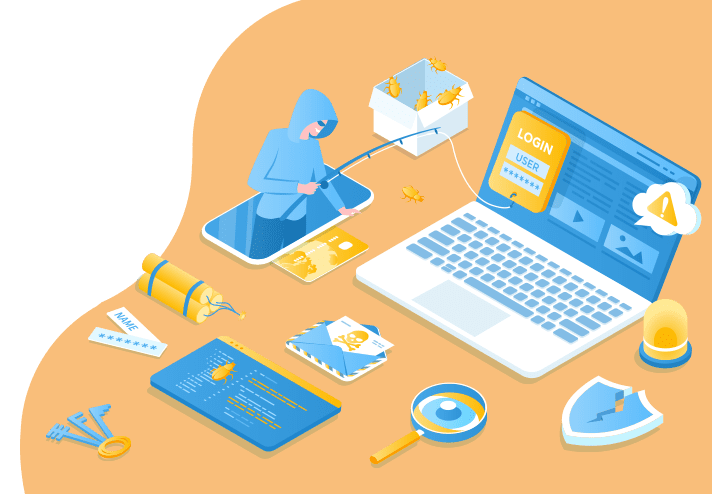 Though it’s been around for a while, phishing attacks continue to be one the most common attacks and a favorite among hackers for their effectiveness and simplicity. These types of malicious attacks account for 90% of all data breaches.
Though it’s been around for a while, phishing attacks continue to be one the most common attacks and a favorite among hackers for their effectiveness and simplicity. These types of malicious attacks account for 90% of all data breaches.
Phishing schemes target the weakest link in the security chain–individual users. Phishing messages usually look like legitimate emails and include suspicious links or a malicious attachment made to look like legitimate links or a document from a trusted source. Use these resources to educate yourself and your end-users on better recognizing fraudulent emails.
7 Ways to Combat Phishing Emails
- Humans play a critical role in data breaches. Phishing scammers look for human errors to exploit and use social engineering tactics to obtain sensitive information and login details. Learn more by reading Cybersecurity and the Human Element.
- With email being the primary communication tool of business, it’s no surprise that it remains a top security risk. Attackers favor email messages because they can go around technical security measures by focusing their efforts on end-users. Discover more about how scammers use the phishing technique in Email Security Threats: You’ve Got Malware.
- Ransomware attacks are on the rise for financial services, according to the SEC’s OCIE. Attackers use phishing scams to gain access to your organization’s systems or data. Once they have access, they lock you out by encrypting your data, demand a ransom for the return of control, and may threaten to publish sensitive data if payment is not made. Read more in Ransomware on the Rise for Financial Services.
- Read Top 10 Cybersecurity Recommendations for a list of ten recommendations and best practices that can help better protect your business from fraudulent activities and evolving cyber threats.
- Does your organization know how to identify a spear phishing attempt? 6 Steps to Take to Reduce Phishing describes potential scammers’ strategies and the tell-tale signs of email phishing.
- In Most Common Types of Cyber Attacks & How to Prevent Them, we share cybersecurity tips to prevent some of the most common types of cyberattacks by proactively managing your risk profile.
- The End-User Awareness Training guide makes a case for end-user awareness training to mitigate human error and help users recognize suspicious activity. In addition, you will learn how to spot types of phishing attacks and other social engineering attacks.
Cybersecurity Awareness Month is a great time to reevaluate your security risk profile, reinforce your posture with additional security measures, and educate your team on. We hope these resources will help increase awareness and prevent future data breaches. Reach out to learn how Coretelligent can help protect your business with our robust cybersecurity solutions.


